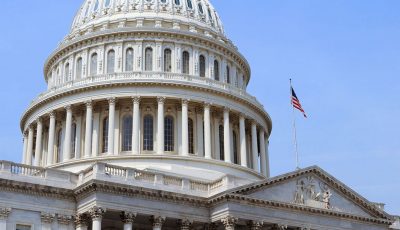CUC penalties at $64.3M
5 stipulated orders being addressed by CUC
The cash-strapped Commonwealth Utilities Corp. has accrued $64.325 million in fines and penalties for failing to timely address the requirements of stipulated orders mandated by the federal government, a substantial amount that the agency has no ability to satisfy if collection is so ordered by the U.S. Environmental Protection Agency.
CUC executive director Alan Fletcher made this known to the agency’s newly functioning board of directors yesterday, adding that CUC is currently addressing not only two but five stipulated orders.
The $64.325 million represent penalties that have piled up since the stipulated orders were issued five years ago. U.S. District Court for the NMI Chief Judge Alex R. Munson signed stipulated orders for CUC in March 2009, setting the requirements and deadlines for CUC to meet. These orders represent the agreement between the CNMI and U.S. Environmental Protection Agency on how CUC will come into compliance with the requirements of the Clean Air Act and the Safe Drinking Water Act.
From about $45 million in accrued penalties reported in January this year, the amount has jumped to $64.325 million. Records of as of January show that CUC was only made to pay a minimal amount of about $169,000, which were paid in two separate occasions in 2010.
According to Fletcher, although EPA hasn’t sought to collect the amount, this doesn’t necessarily mean that the accrual is waived for CUC.
“They haven’t sought to collect so there’s no waiving necessarily and they always retain that option. They know that we don’t have the money,” Fletcher told Saipan Tribune.
He said that CUC has been able to build a “better relationship” with EPA and he pins his hopes on the federal agency’s consideration of CUC’s situation. He cited that in the past, “there have been threats and accusations” made between and among the parties, which just showed the kind of relationship then.
“We worked hard to improve that relationship. [As you know] there has not been trust from EPA and CUC in the past. We built that trust now because we do perform and we take our job very seriously, trying our best to do what is necessary to abide by the stipulated orders,” Fletcher said.
In yesterday’s board meeting, CUC counsel James Sirok disclosed that there’s not only two stipulated orders that CUC is currently working on but five. Stipulated Orders 1 and 2 are the main orders, while the other three are byproducts of these two main orders. He did not elaborate.
Fletcher explained that besides the first stipulated orders issued in 2009, three additional “joint stipulation” were later issued, including one for oil handling, changes in the dates for some deliverables, and clarification.
$64.3M penalties
Records obtained by Saipan Tribune disclosed that EPA assessed the following penalties on CUC as of Sept. 30, 2013:
-$9.2 million for secondary containment;
-$7.5 million for facility response plan requirement;
-$7.650 million for tank system integrity testing;
-$7.650 million for Power Plant 4 work plan;
-$7.5 million for engineering section;
-$3.545 million for drinking water and wastewater division manager;
-$3.114 million for wellhead sanitation;
-$3.845 million for organizational evaluation ad reorganization plan;
-$3.095 million for wastewater treatment plant operation supervisor;
-$2.324 million for water meter installation;
-$2.144 million for drinking water meter reading;
-$2.384 million for chlorination program;
-$1.614 million for quarterly progress reports;
-$1.260 million for executive director;
-$785,000 for interim financial plan;
-$660,000 for technical manager for oil;
-$590,000 for chief financial officer;
-$560,000 for health and safety plan; and
-$155,000 for deputy executive director.
‘EPA can always turn around’
Fletcher disclosed to Saipan Tribune that EPA—at any time—can always turn around and charge CUC for millions of dollars incurred in penalties as well as for projects that EPA itself is doing for CUC with the help of federal funds.
A good example, he said, is the soil cleanup and remediation project that EPA did for CUC. “We’re talking about millions of dollars on this project that they could turn around and charge us in the future to recover those costs,” said Fletcher, pointing out that CUC wants to maintain its good partnership with EPA.
CUC board chair David Sablan vowed to keep that partnership with EPA. “We certainly don’t want to enter any more penalties and fines so definitely, we’re going to do what is require for us to do but we will make sure there’s a balance,” he told Saipan Tribune.
During the meeting, Sablan hinted at the possibility of asking EPA for a waiver on these accrued penalties. He hopes that by banking on its good relationship with EPA, consideration may be accommodated for CUC.
‘Time to get out’
Fletcher also made it clear yesterday that CUC has no sure answer at this time on when it will completely get out of the stipulated orders.
“We’re running second base now [on stipulated orders], but as to when we can get out of it? I don’t know…” he told the board, saying there are items in the orders that would take years to completely address.
However, “with the right investment, CUC can get along.” Fletcher revealed that what CUC is using at present to address stipulated orders are grant monies totaling some $10 million yearly.



























